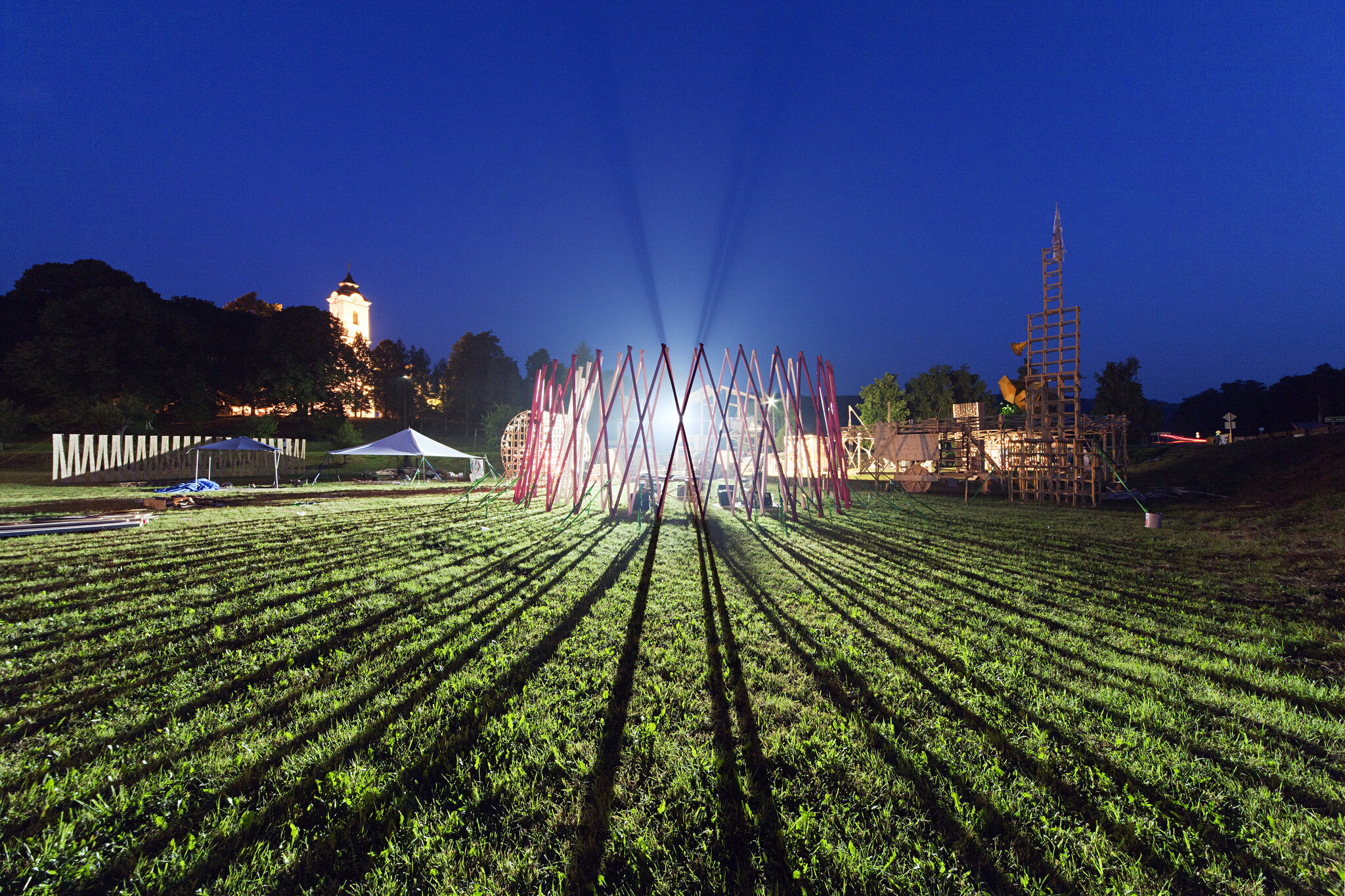In 2016 Hello Wood will return to Csórompuszta on the Balaton Uplands to create a brand new village out of wood. Similarly to previous years, the team will again comprise professional architects – one of the team leaders is renowned for building a ziggurat out of hay in the isolated Russian countryside.
Everyone’s favorite hipster carpenters are back: they’ll set up camp in Csórompuszta before this year’s Valley of Arts to unleash their creative spirit and create curious wooden structures. As the continuation of Project Village, which was launched in 2015, the upcoming summer event will take place between July 14 and 22, and will revolve around they ways communities settle and make a home for themselves at a particular location.
The central theme this time will be setting up a home for the long run, so the architects will be working towards the goal of establishing a permanent system and a village structure deemed ideal by the team members. Accordingly, the countryside workshop will be titled SETTLEMENT: THE RITES OF ARRIVAL.
The workshops of 2016 will be led by such acclaimed artists and architects as Nikolay Polissky, who’s lived and worked in a tiny Russian village since 1989, creating fascinating installations from branches and other locally available materials. One of his most famous works of art is a ziggurat made out of hay. The Urban Think-Tank team will also contribute to the creative summer program: in 2004 they built the prototype of an unconventional gym in the slums of Caracas to create a safe environment for local children to exercise.

A statement issued by Hello Wood reveals that in addition to the week-long workshop, the schedule will also include an international summer school and festival. The wooden creations will be constructed to form a campus for the students and workshop leaders arriving year after year. With the addition of new installations each year, the campus will constantly evolve to incorporate the works erected during future workshops.
After arriving at the Village, participants will start to explore the architectural challenges of settlement. The agenda is expected to feature the following problems:
- the temporary, interchangeable status of guest and host
- the first architecture related steps (both pragmatic and symbolic) communities take after arrival
- how can a space accommodate a variety of habits
- which languages of architecture can a community identify with





